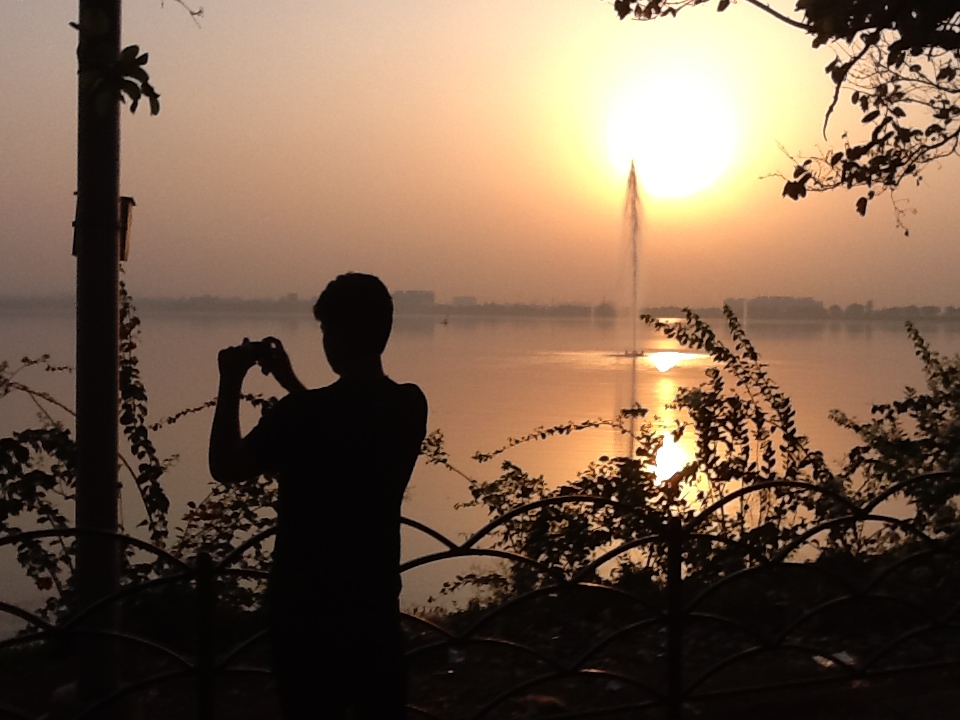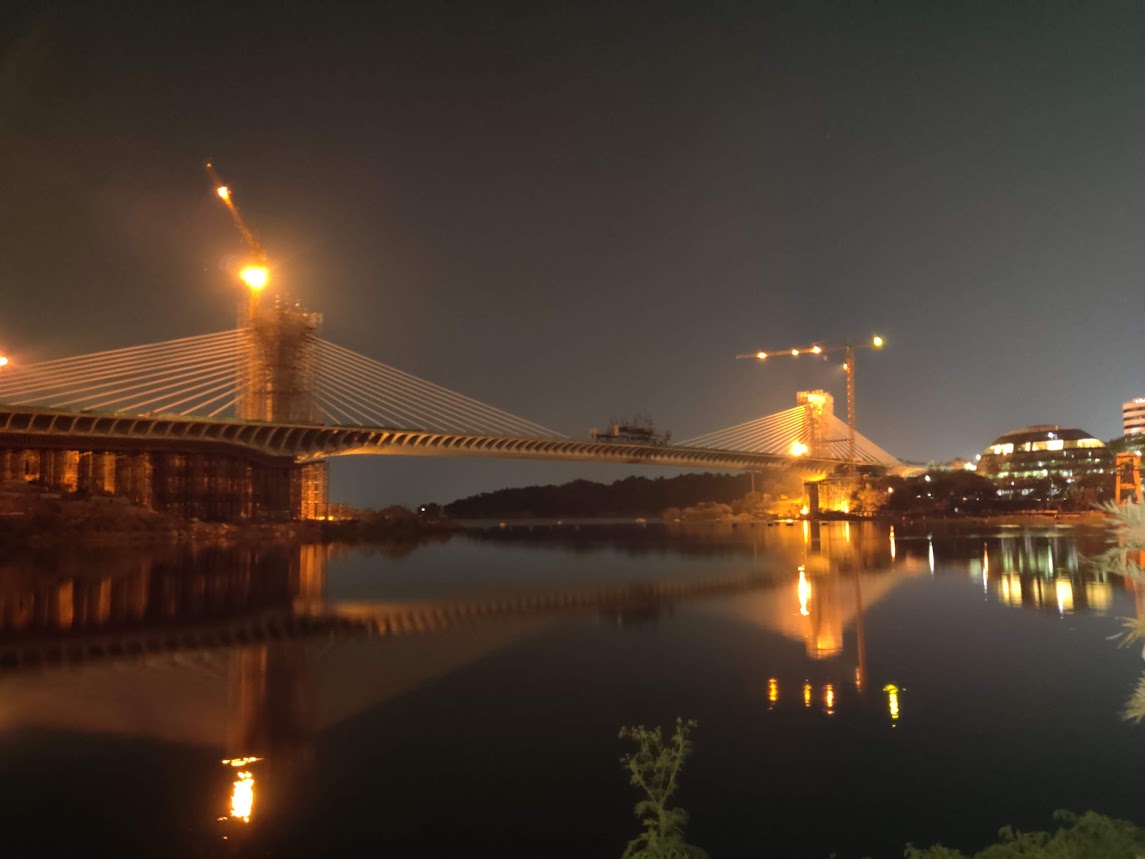My Hyderabad
When I was in Iran on some official work, an Iranian once corrected my pronunciation of Hyderabad: Haider-a-bad, he said, that is, built by Haider. Then another wanted to know if the Nizam still existed. A third heard my Hindi-mixed Urdu and enjoyed separating the Arab words from the Persian (Farsi) and the Turkish (Turkiye), leaving the unidentifiable words to belong to some Indian tongue.
 In the 400 years of the city's history, the Muslims have dominated the landscape, making cultural inroads, building monuments and shaping the destiny of its denizens down the ages. The old world of palaces, lakes and monuments is still charming in its oddity, for it lies segmented from the city's modern streets, malls and conclaves on the other side, which seem to erode everything intrinsic to a place and replace with a uniform pattern which is typically western.
In the 400 years of the city's history, the Muslims have dominated the landscape, making cultural inroads, building monuments and shaping the destiny of its denizens down the ages. The old world of palaces, lakes and monuments is still charming in its oddity, for it lies segmented from the city's modern streets, malls and conclaves on the other side, which seem to erode everything intrinsic to a place and replace with a uniform pattern which is typically western.
One hears the call of the muezzin in ever increasing loudness and frequency. The burqua (the veil), which is coming increasingly under attack in the European nations, is just as ubiquitous as the goateed mullah in his sherwani. The bazaars of Hyderabad - Sultan Bazaar, General Bazaar, Begum Bazaar, Laad Bazaar and many more of their ilk - still thrive amidst bomb scares and the lure of the glass-fronted high-rise shopping centers.
Even the grizzly old city has given up some of its favorites. The cycle rickshaw, a slow and ponderous human beast of burden, has become scarce and surrendered the roadways to its modern avatar, the auto-rickshaw - a triangular motorized contraption that noses its way furiously through a thicket of vehicles and pedestrians; it is ever on the point of collision with everything in its way, bringing its occupants to near extinction at each harrowing moment. The venerable old world brethren have almost but given up the age-old nawabi favorite of chewing betel-nut leaves and expectorating its blood-red juicy syrup on the city walks and compound walls. They have also relinquished the appetite for the internecine wars of communal frenzy; the economics of living in harmony and cooperation have outweighed the blood-thirsty insanity that befuddled and beguiled their predecessors. Probably, with the advent of the common enemy, - the invisible, invincible and soulless enemy - the terrorist, it made more sense to bid farewell to arms against one another.
 Among the Muslims in Hyderabad there were really only two classes: the affluent and the powerful nawabs, and the lowly menial labor class which scrounged on the mercy of the former. While the nawabs were hardly seen in their vast expanding estates, their laboring enslaved multitude towered over their hovels so closely built that their walls abutted against one another, just as the mass of humbled humanity scarcely moved in the over-crowded streets without rubbing shoulders. Reliance on traditional family crafts and trades has kept generations glued to the old world economy and did not provide opportunities for change. But the new market centers, the rise in the IT infrastructure, the opportunities for businesses like desktop computing and cellular phones have all collaborated to entice the youth from their family businesses into new ventures, where growth is not linked to feudal patronage. The rising middle class has effaced the two-class distinction and opened up a vast gray area where the family fortunes graded from the very poor to the very rich. The Dollars and the Dirhams have also contributed to the changing lifestyle.
Among the Muslims in Hyderabad there were really only two classes: the affluent and the powerful nawabs, and the lowly menial labor class which scrounged on the mercy of the former. While the nawabs were hardly seen in their vast expanding estates, their laboring enslaved multitude towered over their hovels so closely built that their walls abutted against one another, just as the mass of humbled humanity scarcely moved in the over-crowded streets without rubbing shoulders. Reliance on traditional family crafts and trades has kept generations glued to the old world economy and did not provide opportunities for change. But the new market centers, the rise in the IT infrastructure, the opportunities for businesses like desktop computing and cellular phones have all collaborated to entice the youth from their family businesses into new ventures, where growth is not linked to feudal patronage. The rising middle class has effaced the two-class distinction and opened up a vast gray area where the family fortunes graded from the very poor to the very rich. The Dollars and the Dirhams have also contributed to the changing lifestyle.
The Old Hyderabad today is in the grip of two powerful influences - a political party for Muslims and a number of social institutions such as the madrassa (an Islamic religious school). Each has an enormous clout over the poor hapless soul of the individual. This sometimes triggers tensions in the old parts of the city, but reason and economic compulsions prevail over the emotional content. Several Urdu dailies feed the news to the hungry masses with a slant of their own and any bit of news from the Islamic countries, especially from the recalcitrant neighbor across the border, evinces interest. But what sustains them at the end of the day is their indefatigable industry, meticulous thoroughness in their work and above all their skill and adaptability to changing circumstances.
There is no wall to demarcate the old city from the emergent new, but the distinguishing signs are unmistakable. The old still retains its quaintness - its busy streets, the endless catacombs of bazaars, the burqa-clad women peering thru slits in their veils, the bearded man with a round white headgear (the topee) rushing by, the turrets of a forlorn castle and the stone masonry of aging monuments - all these and more proclaim its roots in the past that will soon fade into memory as the new world draws its denizens out irresistibly. The baghs and the talaabs - the gardens and the ponds - are fast disappearing, thanks to the burgeoning populace and the demands of a growing city. But the bazaars keep the past alive in their rich glory with the bangles and the pearls, the biryani and the kebab, and the mushaira and the qawwali.
Built by Mohammed Quli Qutb Shah 400 years ago for his beloved Bhagmati, rich with the legacy of Nizams, and articulate with its own twang of Urdu, the city of Hyderabad retains its pristine past, even as it is evolving into a modern software hub for the moghuls of the Information Technology. The rocks of the Banjara Hills and the glitz of the Jubilee Hills will sting any Iranian with envy and do the native Hyderabadi proud.